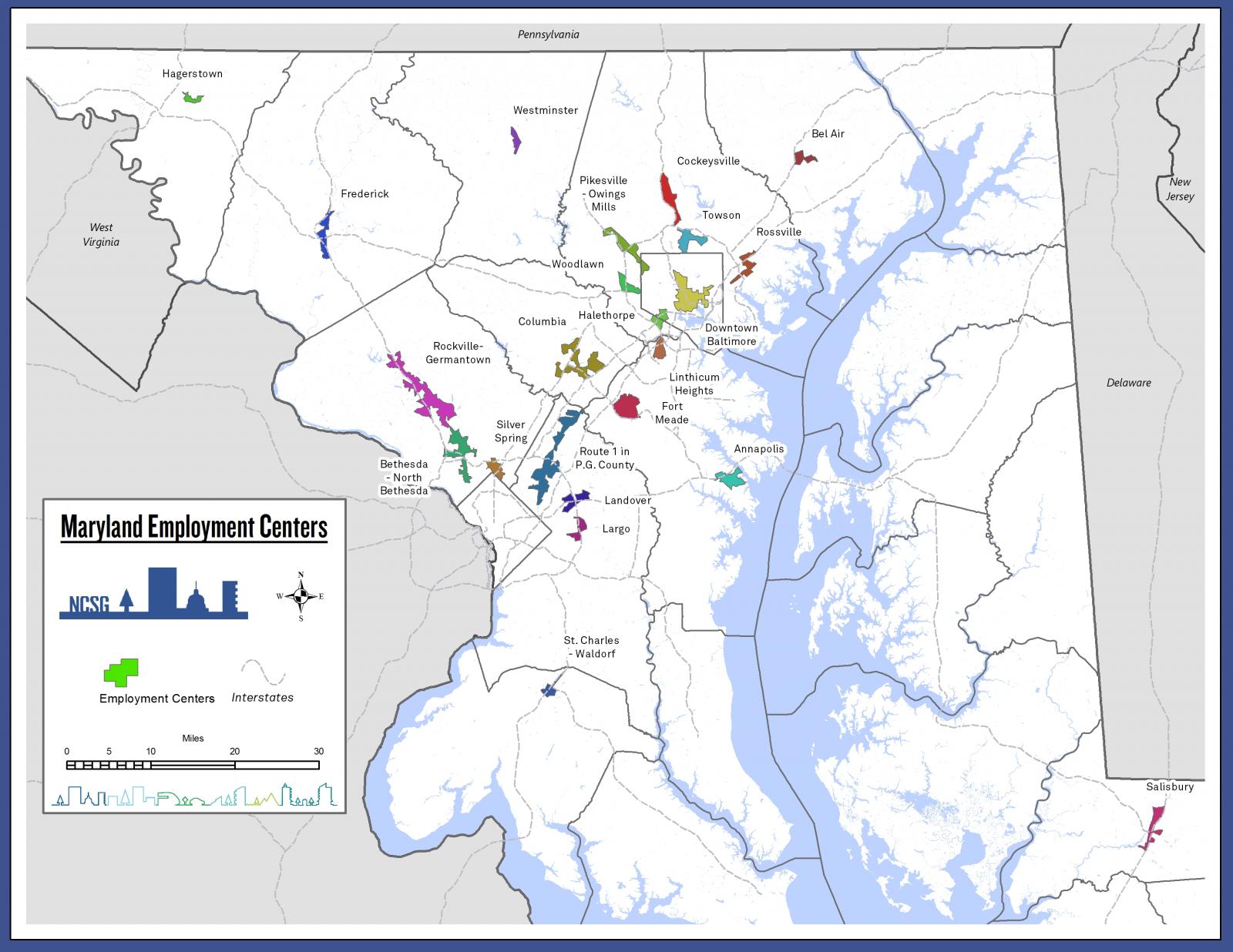To stimulate economic development and job creation, state and local governments should target incentives to specific “employment centers” that have the greatest growth potential and regional accessibility, recommends a pair of studies by the University of Maryland National Center for Smart Growth (NCSG).
One of the studies, “Employment Centers and Agglomeration Economies: Foundations of a Spatial Economic Development Strategy,” has been published online by Economic Development Quarterly. The other, “Polycentrism as a Sustainable Development Strategy: An Empirical Analysis from the State of Maryland,” will appear next month in the Journal of Urbanism (it is currently available at www.smartgrowth.umd.edu). Both recommend a stronger focus on “concentrated employment hubs,” in future state decisions on smart growth, land use and transportation policy.
Whereas most Maryland economic development policies focus on specific industries—such as motion pictures—or target populations—such as the chronically unemployed—the reports suggest that the state also needs to consider the locations where new firms are most likely to thrive.
“Creating jobs statewide is a vital necessity, but the natural magnets for new firms are the areas where the transportation infrastructure, skilled workforce, and complementary businesses are already in place,” says Gerrit Knaap, director of the university’s NCSG. “This is what is needed for new businesses to survive and what leads to higher transit ridership. Most state smart growth policies fail to take this into consideration.”
For example, many state economic development programs—such as the job creation tax credit program—provide incentives for firms to locate in Priority Funding Areas, Knaap says. But Priority Funding Areas were drawn based on residential densities and primarily designed to contain residential growth. To promote smart economic development, incentives should be directed to areas where firms have the greatest chance of survival, he recommends. Job hubs offer firms the benefit of proximity to existing firms, while the state gets the greatest return on its investment in transportation infrastructure.
These “employment centers” represent the largest concentration of jobs per square mile within a region. Downtown Baltimore, the 270 corridor, Hunt Valley and Greenbelt-College Park all represent areas of concentrated employment within the Baltimore-Washington Metropolitan Area, each boasting between 10,000 and 360,000 jobs.
While the footprint of these employment centers is small—about one percent of the state’s land area, the studies report—they offer the highest concentration of high-paying jobs. According to the NCSG, these employment hubs host 40 percent of the state’s jobs and 46 percent of the total wages paid. Compared with employers not located in these centers, NCSG researchers found firms located in the top 23 hubs employ nearly twice as many workers per firm and pay nearly 30 percent higher wages.
Not only do these hubs attract businesses, the studies found them critical engines for innovation, new business and economic growth. Business “births” are higher in employment centers than in any other area of the state, reports “Employment Centers and Agglomeration Economies.”
“These economic centers act like natural business incubators,” says Professor Chengri Ding, the study’s lead author. “We found that in the period just before the great recession in 2008, a significantly larger proportion of firms in the Construction; Finance, Insurance, and Real Estate (FIRE); Professional Services; and Administrative Services were born inside economic centers rather than outside them.”
Paying more attention to these hubs of employment could also influence future transportation planning and policy, particularly when weighing new public transit projects. Using the Maryland State Transportation Model, the NCSG researchers estimate that the 23 centers attract 21 percent of all automobile trips and 39 percent of all transit trips. Research also found that private sector creation and growth was strongly affected by the availability—and location—of transportation infrastructure.
According to Eli Knaap, lead author of “Polycentrism as a Sustainable Development Strategy: An Empirical Analysis from the State of Maryland,” “these results suggest that locating jobs near transit stations might be the most effective means of increasing transit ridership in the state.”
The report findings have strong implications on future housing development as well, particularly when considering the influx of millennials and immigrants into the workforce. The researchers conclude that encouraging housing development within transit commute sheds of these employment hubs—particularly those with strong transit accessibility—can best accommodate both the desires of a changing, more urban-focused workforce and long-term sustainability.
“By making Maryland job-ready in the centers most desirable to future employers, the state can light up an ‘open for business’ sign,” concludes NCSG director Gerrit Knaap.

